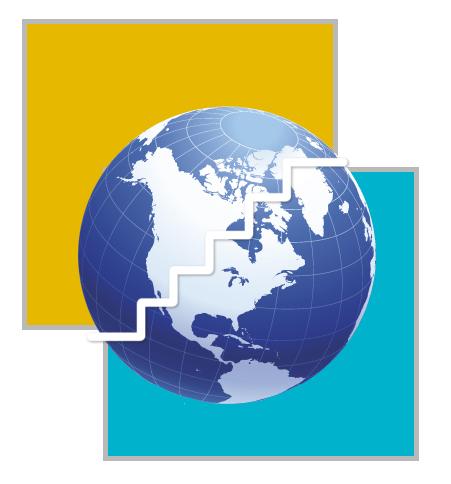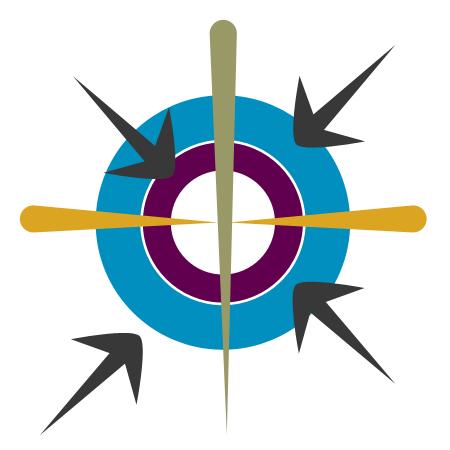News
The Faculty of Law of the University of Geneva had organised a conference on �€œFreshwater and International Law�€ at Geneva on 7-9 July 2011. The concluding session of the conference was on prevention and settlement of water related disputes. It was chaired by Prof Georges Abi-Saab, former Chair of the WTO Applelate. The panellists included Ms Ilmas Futehally, Executive Director of Strategic Foresight Group; Judge Awn Shawkat Al-Khasawaneh, Judge at the International Court of Justice; Mr Salman Salman, former Lead Counsel of the World Bank; and Prof Edith Brown-Weiss, of Georgetown University Law Center, who has also headed the World Bank Inspection Panel.
The following is the text of the speech delivered by Ilmas Futehally at the conference.
Let�€™s first look at the context in which the question of preventing water disputes is assuming a growing importance. Historically, water is perhaps the least of a cause for conflict between and within countries. Land has been the main reason for wars ever since the first known state was established in Egypt almost 5000 years ago. In the last century, ideology and energy emerged as new causes of international conflict.
The 21st century is different in terms of unprecedented growth of population, industry, technology, and therefore demand on natural resources, including water. By 2050, the world may have a population 3 times of what it was in 1950 and 9 times of what it was in 1750. From 1950 to 2050 we would have lifted more than 5 billion people out of poverty. These developments will not be free of cost. The biggest price we will pay will be in terms of growing demand on water. At the same time, supply of freshwater is expected to diminish due to the negative consequences of industrialisation, pollution, climate change, desertification, and urbanisation.
This new threat will be most evident in what may be called as the mega arc of hydro insecurity, spreading from Vietnam in the East running through China, Bangladesh, India, Nepal, Pakistan, Iran, Iraq, Syria, Jordan, Israel, Egypt and then going all the way to Kenya in East Africa. The Middle East is at the epicentre of this arc, therefore, Strategic Foresight Group has been focussing significantly on addressing ensuing water crisis in that region. We are also looking at some of the other trouble spots in the arc that I just described. According to some estimates, the supply of fresh water could be depleted from anywhere between 20 to 40% in the Middle East and other countries in the mega arc of hydro insecurity. Moreover, drop in availability in fresh water will mean decrease in food grains, very high prices of essential commodities, loss of livelihood for millions of poor people in rural areas forcing them to migrate elsewhere leading to social destabilisation. These developments carry the risk of producing havoc, a sense of insecurity, election of autocratic leaders and conflict within and between countries.
While specifics may change from one geography to another along the arc, one factor is clear, and common. The old approach of preventing water conflict by negotiating a formula for allocation of fresh water flows will not work. The amounts that we agree on today will not be simply there in 10 years time. For instance, Israel and Palestine territories agreed on a certain formula for the sharing of water resources in the course of the Olso Accord in 1993. Since then, the Mountain Aquifer has been depleted by 7%. If they wait for another decade to reach an amicable solution, the aquifer may be depleted by at least 10% as compared to the Oslo figures. Therefore the old formula will be invalid.
Jordan River and some of its tributaries have lost more than half of their flow as compared to 50 years ago. At the current rate, these rivers may not simply exist in 50 years from now. The Barada River which feeds the Syrian capital of Damascus has become an occasional river. According to some climate experts, the mighty Tigris and Euphrates may also lose some of their flow in the next few decades. With such massive changes, agreements based on quantitative allocation of water are bound to become irrelevant.
What we need is a joint sustainable, comprehensive, integrated management of water resources by countries in any region. In brief, the issue is not how to share the pie, rather the issue is how to preserve, nurture, and expand the pie and how to share benefits from its sustenance for the social and economic development of people in the region. This can be done at the basin level, through the concept of IRBM, which is now well established in the water discourse. Or better still, it should be done at a regional level. The imperative for a regional approach comes from the fact that the unit of decision making is still the state, and whatever a state decides about one basin can have impact on demand and supply conditions of other basins. For instance, Syria�€™s situation in Barada basin determines overall availability of water in the country. It can have impact on other basins. If the Barada is managed properly in the long term, Syria need not divert water from the Euphrates. However, if Barada runs dry, Syria has to think in terms of channelling water from Euphrates to Damascus, Hom and other cities in the South West. Since Syria shares the Euphrates with Turkey and Iraq, its demand on Euphrates waters has implications for its relationship with Turkey and Iraq. If theoretically, Barada has abundant water, Syria�€™s demand on the Euphrates will go down and it will be a lot more flexible in releasing water received from Turkey to Iraq.
Strategic Foresight Group describes prevention of future water conflicts through sustainable, comprehensive and integrated management of water resources by countries in any region as the Blue Peace Approach. Unlike conventional concepts of peace which are often armistice or arms control agreements, to prevent a war, the Blue Peace Approach proposes a proactive process of cooperation in water which is the most crucial element in socio economic development of the poor. If countries in a given neighbourhood are actively engaged in cooperation for harnessing benefits from water resources and preserving fresh water, rather than merely allocating shares of water resources, they will have no incentive to go to war.
In some ways, the role played by coal and steel in Europe in the 1950s is somewhat comparable to the role that water and environment will play in the 21st century and in the emerging and developing economies. Coal and steel were important ingredients of the process of industrialisation, characterised by factories, automobiles, machines, roads, and railways. Once France and Germany agreed to create a Coal and Steel Community, they could leave behind several centuries of hostility. Water and environment will be critical components of the new economy characterised by food products, renewable energy, nano-technology, and industries driven by research and knowledge. If countries can agree to promote water and environment sector together, they will have no option but to preserve their relationship merely because of the stakes involved.
Cooperation in fresh water goes beyond dams and canals, as per the Blue Peace Approach. The marriage of water with knowledge industry is an important subtext of the Blue Peace. Experiments being carried out in different parts of the world demonstrate that new irrigation techniques and computerised monitoring of water flow to plants can reduce water requirement by more than half of current rates. It is possible to treat waste water using nano-technology and regenerate it to the level of drinking water. Changes in urban planning can lead to conservation of water resources. Thus, availability of water will have more to do with nano-technology, bio-mimicry, urban planning, efficient production of food grains and industrial materials and less to do with the formula for determining how much water an upper riparian should allow to flow to the lower riparian countries. The countries that miss this point are the countries that are failing to see a revolution in the making. Any society which closes its eyes to a revolution taking place around it, does so at a very heavy risk.
The Europeans have been advanced in developing a regional approach for sustainable management of water resources. The European Union has agreed on common goals and standards for restoration and preservation of water bodies across the continent. Such a sharing of policy framework is not dependent on countries sharing water resources. There are no common water resources between Britain and Bulgaria, or Ireland and Italy. Yet, they have agreed to EU Water Framework Directive. There are separate agreements by riparian countries focussed on specific water resources or basins. These include the famous Danube Commission and joint management of Lake Geneva by France and Switzerland. The regional approach implemented in Europe can be applied in many other regions of the world. The Africans have been the first to realise this. They have established the Southern African Development Community and a common water region for all member countries, even though several of them such as Madagascar and Malawi do not share common water resources, but find a value in sharing a common policy framework. There are separate basin specific arrangements, either negotiated or in the process of negotiation.
The wisdom demonstrated by countries in Europe and Southern Africa can be relevant for those in the Middle East and Asia. In fact, they need it even more as they need to choose between two paths since they constitute the mega-arc of hydro-insecurity. One is the path of the Blue Peace, and opening eyes to the forthcoming revolution in water and environment, driven by revolution in genomics, robotics, artificial intelligence and other sectors. This path will require institutional structures. The SFG has proposed Cooperation Council for Sustainable Water Resources in the Middle East. It has also proposed the Himalayan River Commission for the countries in the Eastern Himalayas. Such cooperation councils can facilitate introduction of common standards for the quantification of data, develop regional climate change models, introduce and disseminate new technologies and plan joint projects for harnessing the benefits from shared as well as unshared water resources in the given region. The cooperation councils can also optimise the use of advanced technologies to enable water treatment, mitigation of water loss, monitoring remote sensing and environmental protection. Any two countries which follow the path of Blue Peace will have no incentive to follow the path of military confrontation despite dwindling water resources in the next several decades.
The Blue Peace approach requires engagement of mainstream policy makers in developing a regional cooperation plan relevant to any region. When we launched the Blue Peace process, about 100 policy makers and experts from the Middle East were involved. About half of them were cabinet ministers, diplomats and parliamentarians, including Heads of Government who are not responsible for the water portfolio. The other half were ministers, civil servants and experts from the water sector. The process leading to the implementation of Blue Peace recommendations has already created a mix of legislators and policy makers where water authorities are part of a larger chain. Governments of Switzerland and Sweden, who supported the Blue Peace Initiative in the Middle East, have refrained from interfering in any manner. The process is essentially regional, driven by local stakeholders with only a supporting role played by Strategic Foresight Group and SDC.
I believe that the Blue Peace approach has wider application beyond the Middle East. If it is showing any signs of hope in a strife torn region, it can certainly be helpful in many parts of the world. Time has come for the world at large to explore Blue Peace not only for water and environment, but also for peace and development of millions of people.





